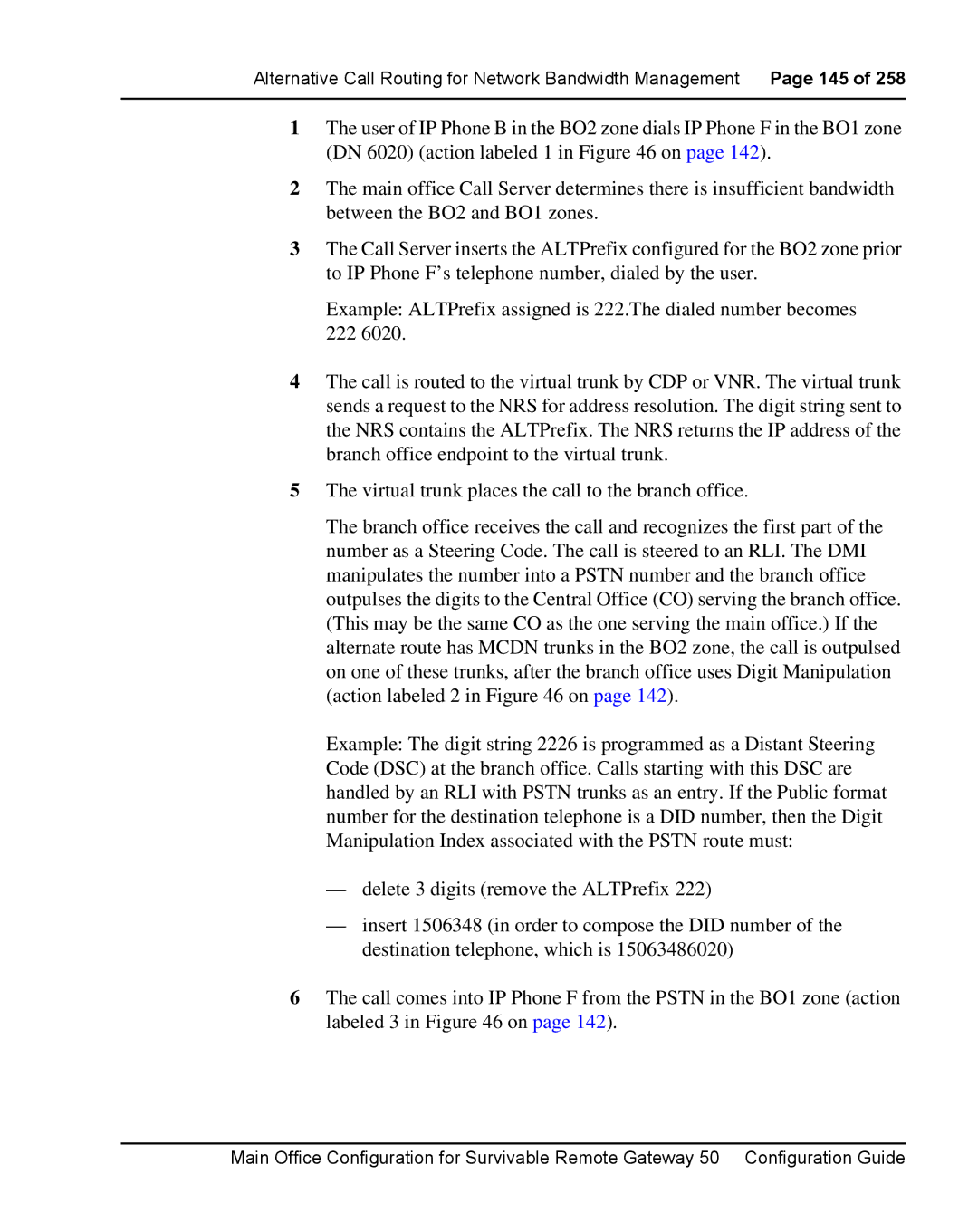
Alternative Call Routing for Network Bandwidth Management Page 145 of 258
1The user of IP Phone B in the BO2 zone dials IP Phone F in the BO1 zone (DN 6020) (action labeled 1 in Figure 46 on page 142).
2The main office Call Server determines there is insufficient bandwidth between the BO2 and BO1 zones.
3The Call Server inserts the ALTPrefix configured for the BO2 zone prior to IP Phone F’s telephone number, dialed by the user.
Example: ALTPrefix assigned is 222.The dialed number becomes 222 6020.
4The call is routed to the virtual trunk by CDP or VNR. The virtual trunk sends a request to the NRS for address resolution. The digit string sent to the NRS contains the ALTPrefix. The NRS returns the IP address of the branch office endpoint to the virtual trunk.
5The virtual trunk places the call to the branch office.
The branch office receives the call and recognizes the first part of the number as a Steering Code. The call is steered to an RLI. The DMI manipulates the number into a PSTN number and the branch office outpulses the digits to the Central Office (CO) serving the branch office. (This may be the same CO as the one serving the main office.) If the alternate route has MCDN trunks in the BO2 zone, the call is outpulsed on one of these trunks, after the branch office uses Digit Manipulation (action labeled 2 in Figure 46 on page 142).
Example: The digit string 2226 is programmed as a Distant Steering Code (DSC) at the branch office. Calls starting with this DSC are handled by an RLI with PSTN trunks as an entry. If the Public format number for the destination telephone is a DID number, then the Digit Manipulation Index associated with the PSTN route must:
—delete 3 digits (remove the ALTPrefix 222)
—insert 1506348 (in order to compose the DID number of the destination telephone, which is 15063486020)
6The call comes into IP Phone F from the PSTN in the BO1 zone (action labeled 3 in Figure 46 on page 142).
Main Office Configuration for Survivable Remote Gateway 50 Configuration Guide
